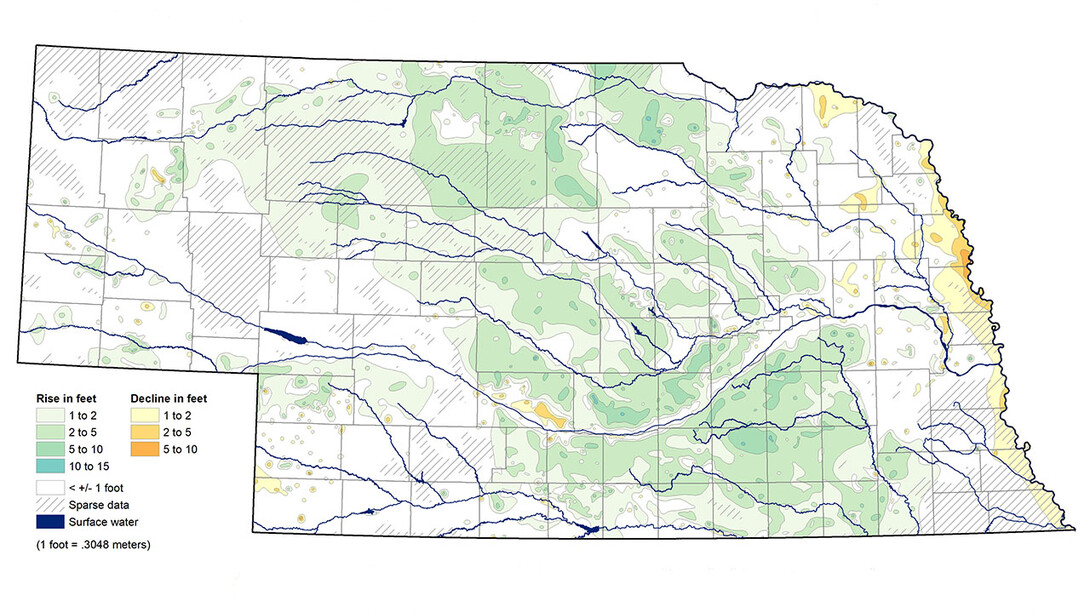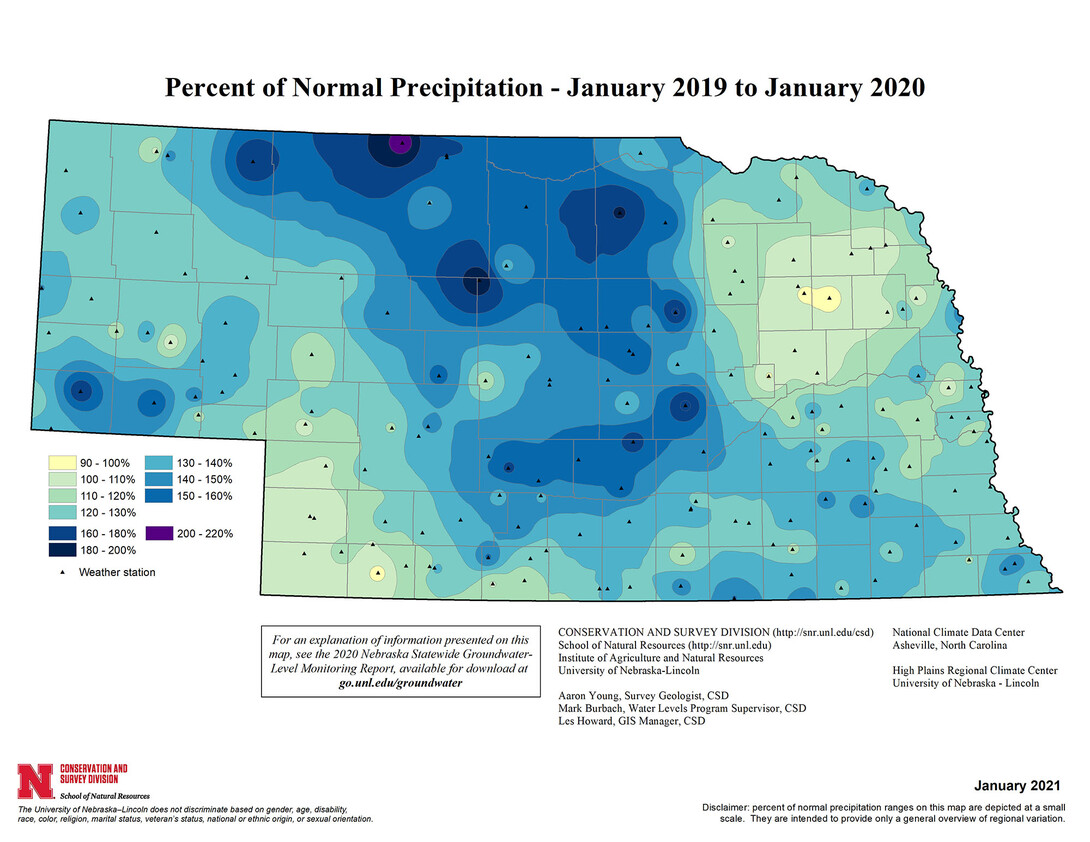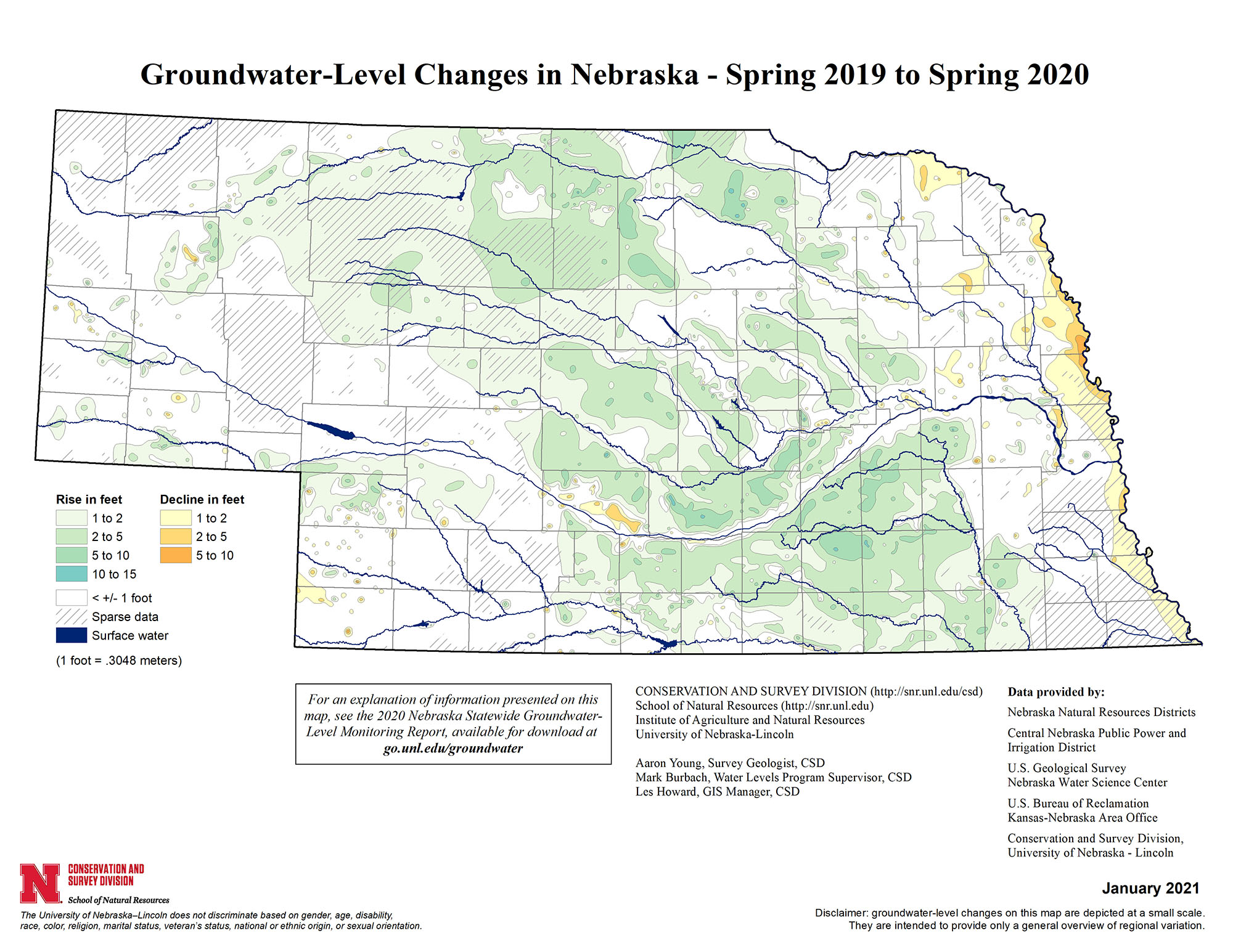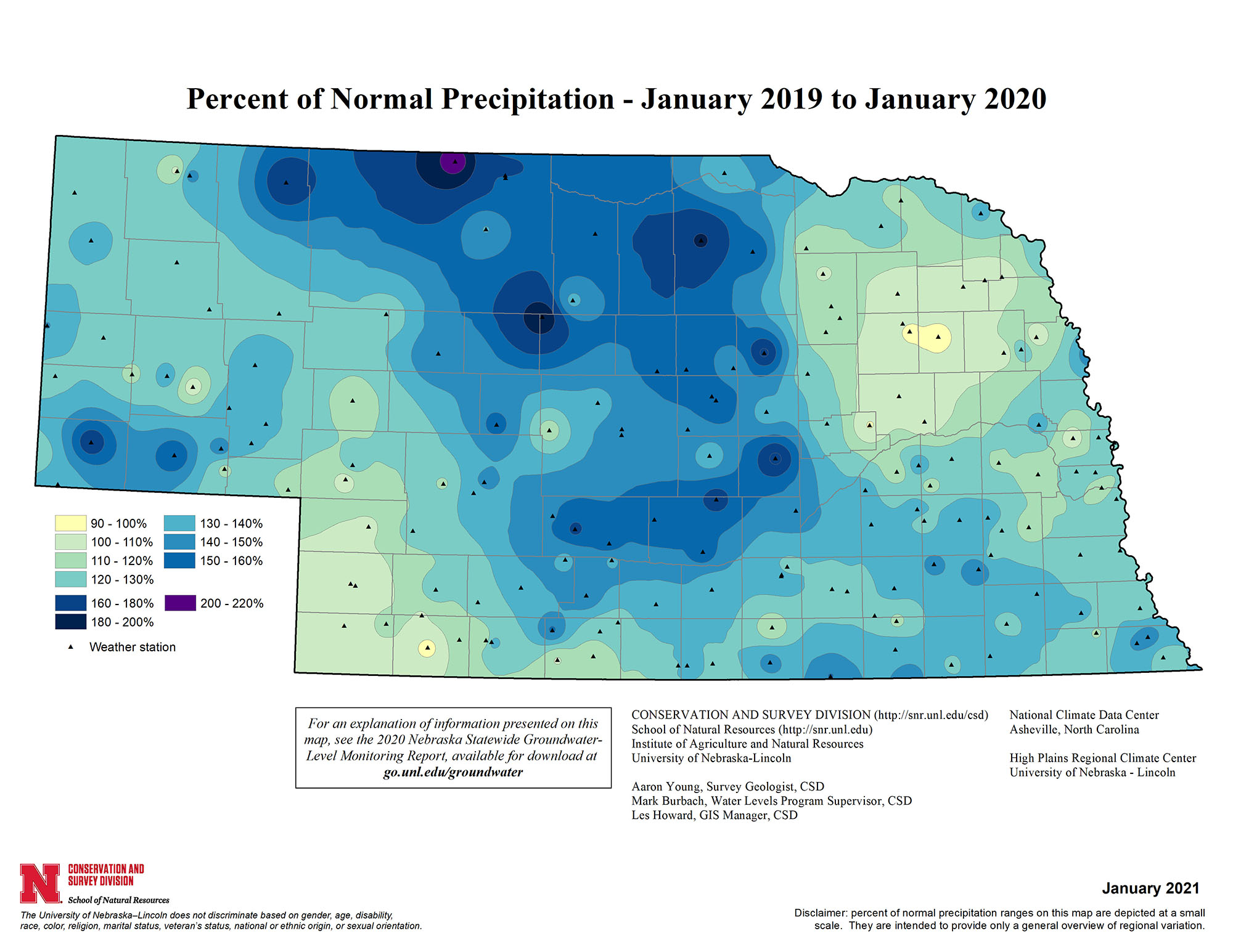
Groundwater levels rose significantly across most of Nebraska from January 2019 to January 2020, and the state received so much precipitation over that period that a new color was added to the 2019-20 precipitation map included in the recently released 2020 Nebraska Groundwater-Level Monitoring Report.
“We ran out of blues, so we had to go to purple,” said Aaron Young, a geologist with the University of Nebraska–Lincoln’s School of Natural Resources and lead author of the report.
Over that period, Young said, 159 of 163 weather stations across Nebraska measured more precipitation than the 30-year normal. While most of the state was bathed one shade of blue or another to reflect bountiful totals, the purple dot was added in Cherry County, where 212% of normal precipitation fell.
The rain, snow and ice surpluses from 2019 were reflected in thousands of well measurements taken across much of Nebraska in early 2020, beneath which nearly three-quarters of the total volume of the High Plains Aquifer lies. In total, 4,970 wells were measured across Nebraska last spring, and there was an average increase of 1.58 feet in them statewide.
“An average rise of 1.58 feet statewide is pretty significant,” Young said.
Groundwater-level rises were recorded in 79% of the wells measured, with 55% of the wells recording an increase of more than a foot of water.
Many of the groundwater level decreases in the latest report were recorded in wells located near the Missouri River or in Dawson County, which is located along the Platte River. Young said that in 2019, those water levels were measured at or near the peak stage of spring flooding, meaning that even though groundwater totals remained robust in those areas when they were measured in early 2020, the measurements had nowhere to go but down.
“So, we’re not actually seeing a decline,” he said. “We’re just seeing a departure from extremely high levels in 2019.”

Typically, the Nebraska Groundwater-Level Monitoring Report reflects measurements of over 5,000 wells. That number was slightly smaller this year in part because of flood-related access issues or pandemic-related travel restrictions put in place in early 2020, when Young typically visits about 120 well sites to record measurements by hand.
“It’s still a pretty robust map,” Young said. “There are some areas along the Platte and Missouri rivers that are missing a measurement either from spring 2019 flooding or COVID travel restrictions. That could leave some holes in an area that normally don’t have a hole. But overall, it’s a pretty dense dataset.”
Other than a slight decrease in the total number of measurements collected, Young said the only other major pandemic-related difference to compiling the report was that he completed the hand-drawn maps of the state’s aquifers on his kitchen table rather than at his Hardin Hall office.
The process of completing the groundwater level map involves a combination of computer renderings that produce an initial interpolation of changes across the state’s aquifers, followed by a hand-drawn edit that corrects areas where Young knows aquifer boundaries exist, such as along the Platte River or Nebraska’s surrounding borders.
The report, created at the Conservation and Survey Division in the School of Natural Resources, was written, researched and produced by Young, Mark Burbach, Leslie Howard, Susan Lackey and Matt Joeckel. The report can be found here.
All of the maps found in the 2020 Nebraska Groundwater-Level Monitoring Report, as well as data from the individual wells that were measured, can be examined on an interactive website created by CSD. The portal to the interactive site can be found here.









